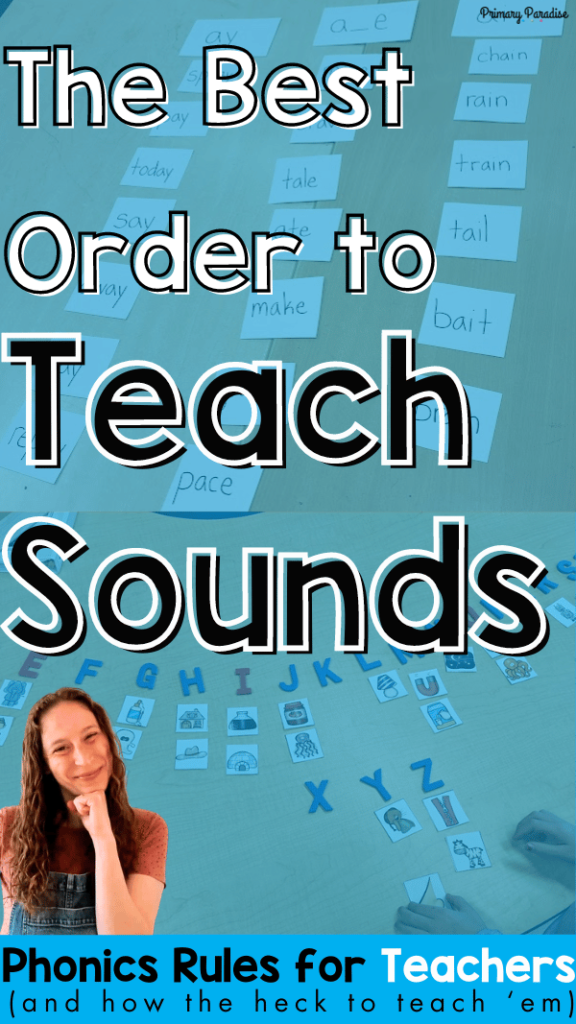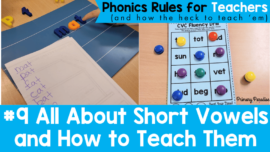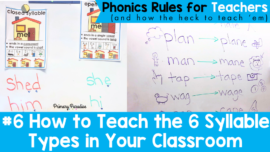Which is the best letter sound order? Is there one correct phonics scope and sequence that follows the science of reading? What does the research say about the sequence in which we teach our students phonics? You probably know that structured literacy requires just that: a structure. However, it can feel overwhelming to determine which order to teach sounds. Let’s take a look at which is the best sequence to follow when teaching sounds and why. In future posts, I’ll delve into how to teach each concept specifically.
This is post 8 in my series Phonics Rules for Teachers (and How the Heck to Teach ‘Em). If you’d like to see previous posts, you can click here.
Would you rather listen or watch? Find a podcast version of this blog post here, or watch the video below.
Deciding what order to teach sounds to your students might feel overwhelming, but it’s actually simpler than you think. Before we get started, it might be helpful to give yourself a refresher on the difference between letter sounds and letter names.
Is there one “best” order to teach sounds?
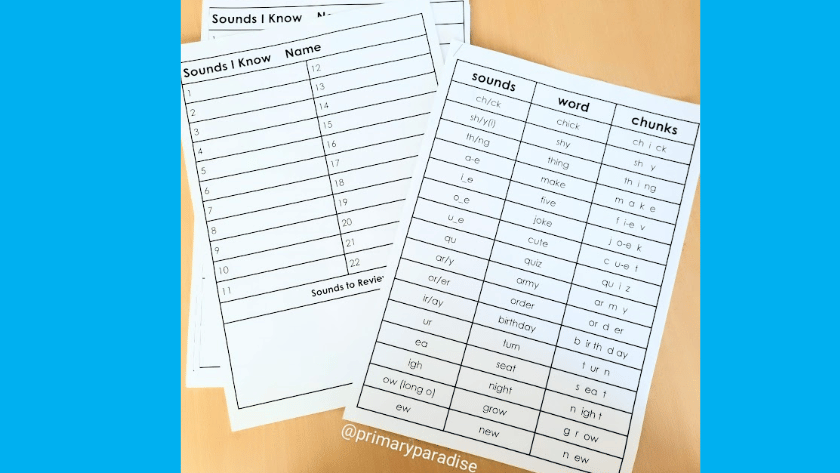
Let’s start with this important piece of information. There is no one “best” order for a phonics scope and sequence. Overall, as long as you are following a logical, sequential plan, your students will develop the phonics understanding they need for strong decoding and encoding skills. So, rest assured that you aren’t going to “do it wrong”.
Best practices for developing a phonics scope and sequence
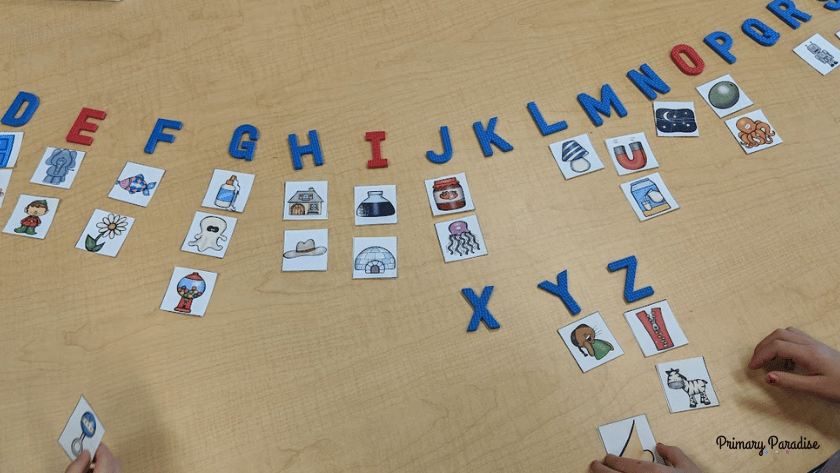
While there isn’t one right order, there are some best practices to consider while developing a scope and sequence. It’s important to keep some key things in mind to set your students up for success.
The sounds should progress from simpler to more complex.
Just like we don’t start with division for our youngest learners, we don’t start with complex sounds. When choosing the order to teach sounds to your students, you want to start with simple, single letter sounds and build up to more difficult and complex sounds.
The sounds should progress from more common to less common.
While ey can spell the long a sound (as in they), it’s only used in a small percentage of words. The goal with following a logical scope and sequence is to get our students reading and applying the skills they are learning. This is why we start with short vowels (since closed syllables make up about 50% of syllables in the English language) and single letter sounds.
The scope and sequence should be consistent across grade levels.
Developing a phonics scope and sequence should be a schoolwide initiative. It’s important that it is aligned vertically so your first graders can pick up where kindergarten left off. You don’t want some sounds to be missed because it’s assumed that another grade has covered that. It’s also important to have some overlap at the beginning/end of the year to account for potential summer slide or gaps in knowledge.
The scope and sequence should be a roadmap not a law.
Lastly, when creating a scope and sequence, it’s important to realize that not all children will progress at the same pace. If a grade 2 student hasn’t mastered all of the “grade 1” sounds, that doesn’t mean you just keep plugging along. It should be used as a roadmap. If someone is farther along or farther back on the route, they need to work where they are.
What order should a strong scope and sequence follow?
Consonants and short vowels
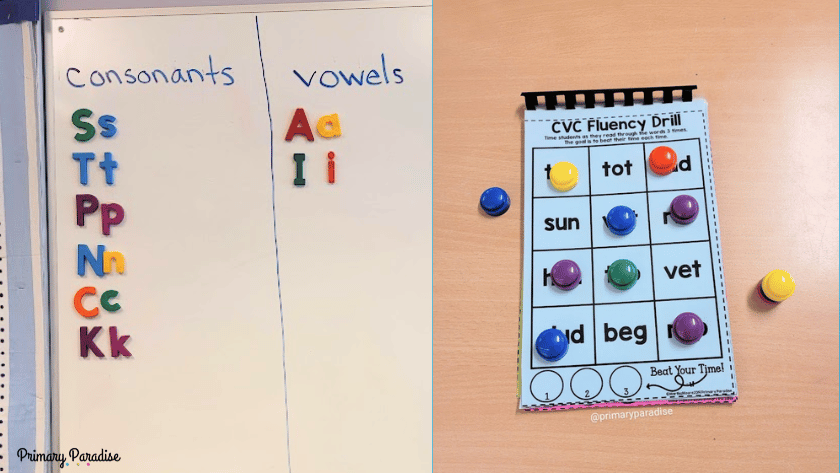
Most, if not all, scope and sequences will begin with the most common single letter sounds and the short vowels. The main factor to consider is this:
- don’t teaching similar sounds too close together (although I do think teaching c and k together makes sense because they both represent the same sound much of the time)
- teach vowels within each group so students can build words (since every word needs 1 vowel sound)
- don’t spend too long on a single sound, but do work on using sounds in context
- teach closed syllables at the same time
Here is an example of a good order to teach consonants and single letter sounds. Typically you can spend 1 or 2 days on each letter sound and then continue to practice the sounds you’ve learned as you add new ones.
- s a t p i n
- c k e h r m
- d g o l u
- f b j v w
- v y x z qu
Consonant digraphs
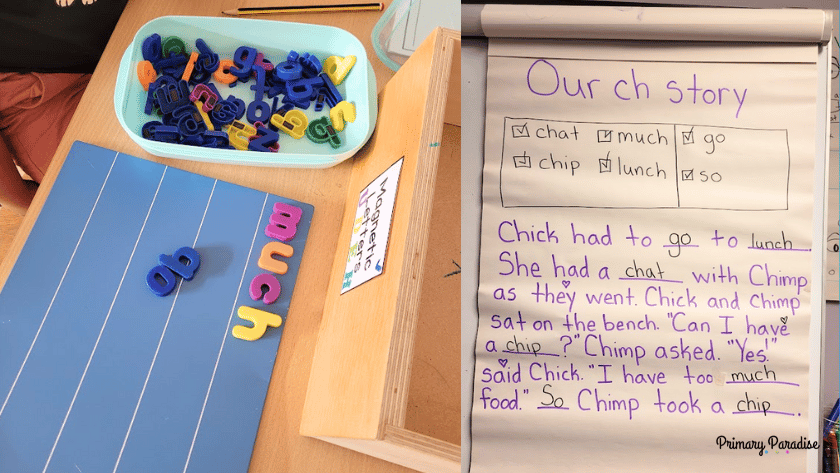
After students have a good understanding of the single letter consonant sounds and short vowels, it works well to focus on consonant digraphs. A digraph is two letters that represent one sound. You can also continue to focused on closed syllables as students only know short vowels still.
Here are the consonant digraphs to start with.
- sh ch th wh ck ng
Long vowels
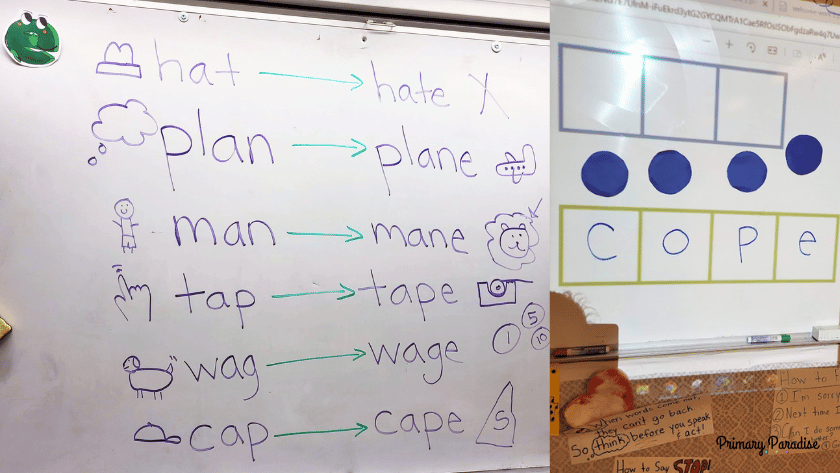
Next students should learn that vowels also have long sounds. This is a great opportunity to introduce open syllables. After they understand long vowels and open syllables, you can focus on silent e syllables.
- a_e i_e o_e u_e e_e
While silent e spelling patterns often represent long vowel sounds, silent e has other jobs as well. It’s important to talk about those as well.
Vowel teams
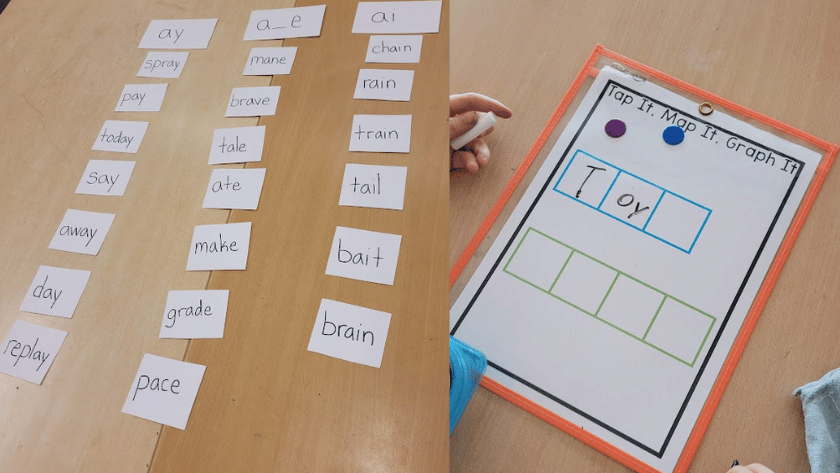
Next it’s time to introduce vowel teams. Vowel teams often represent long vowel sounds and diphthongs, but they can also represent short vowel sounds. Again, it’s most helpful to start with the most common used sound first. This is also a good time to teach y that spells i and y that spells e. While these are open syllables, I wait until a little later to teach these sounds.
Here is an example of an order to teach vowel teams.
- ee (bee)
- ai (pain)
- ay (pay)
- ea (pea)
- oa (boat)
- ow (snow)
- ie (pie)
- ue (glue)
- igh (right)
- y (by)
- y (baby)
- oo (pool)
- oo (book)
- aw (saw)
- au (cause)
- ew (new)
- oi (coin)
- oy (toy)
- ou (ouch)
- ow (cow)
R controlled vowels in a phonics scope and sequence

R controlled spelling patterns could be taught after vowel teams, or they could be interspersed within the vowel teams. However, I recommend teaching them in this order.
- ar (far)
- or (torn)
- er (her)
- ur (burn)
- ir (bird)
Less common spelling patterns
The spelling patterns above are more common, so it’s best to focus on those first. Then, you can introduce less common spelling patterns. At this point, students should know the syllable types that are connected with these spelling patterns.
- le (table)
- ph
- ea (steak)
- ea (bread)
- ie (field)
- eigh (eight)
- ey (they)
- ei (receive)
- oe (toe)
- ui (fruit)
Where to focus next
Once students have mastered most phonics spelling patterns, you can begin to focus more on prefixes, suffixes, and morphology. This can normally begin in 2nd or 3rd grade, depending on how the scope and sequence is divided in your school. If students have a firm understanding of the spelling patterns listed above, they will be equipped to read a large portion of texts.
For a printable version of this scope and sequence as well as more resources to support phonics instruction, you can get How the Heck to Teach ‘Em: A Phonics Rules for Teachers Resource here.
